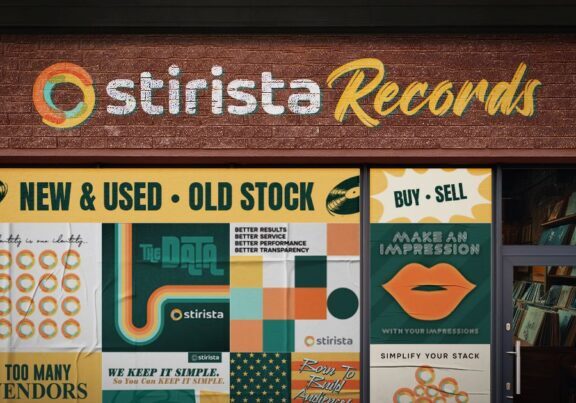How Identity Data is Revolutionizing CTV Advertising

September 17, 2025

- Connected TV (CTV) viewership has surpassed traditional TV, attracting increased advertising budgets due to its effective targeting capabilities.
- Advertisers face challenges with CTV targeting, including low match rates and the loss of reliance on IP addresses and cookies due to increasing privacy laws and company policies.
- To overcome these hurdles, advertisers are turning to identity data solutions, such as privacy-conscious unified IDs and identity graphs.
- These new solutions, often used with a company’s first-party data, offer a more reliable way to achieve cross-channel measurement and improve audience reach in a privacy-first environment.
How Identity Data is Revolutionizing CTV Advertising
In search of privacy-conscious yet effective solutions, CTV advertisers are leaving behind the IP addresses and the cookies, and embracing identity resolution instead.
CTV viewership has surpassed traditional TV for the first time – ever – this past May. That’s a win for advertisers, who are pouring more and more budget into the channel. In fact, this year CTV ad spend will also rise to a high – of 33.35 billion dollars.
It’s long been clear to advertisers that CTV’s more granular targeting capabilities outshine traditional TV’s broad reach.
But CTV advertisers still have some pretty high hurdles to jump. Consider low industry match rates and increasing privacy protections and signal loss (including the obfuscation of IP addresses, which CTV has long relied on for targeting).
Fortunately, many advertisers are converging on a solution – identity data. When coupled with a company’s first party data, additional privacy-conscious identity solutions – which rely on hashed emails and aggregated and anonymized data, meaning IP addresses can still have a place in attribution – seem like the way to go.
With privacy-first identifiers and identity graphs emerging, could identity data be the industry’s silver bullet?
Goodbye, cookies and IP addresses
CTV is, by nature, a cookieless environment – but advertisers have still long relied on cookies to follow prospects onto other channels, like to connect CTV ad exposures to activity online.
But with privacy laws emerging in more states and users increasingly wary of sharing cookies, how do you preserve cross-channel measurement without them?
Historically, many CTV workflows used household-level public IPs for matching and attribution, and those IPs change over time, like when a router is rebooted — limiting reliability.
IP addresses are also considered personal data in Europe, under the GDPR. In the US, about 20 states now have comprehensive privacy laws, many of which define online identifiers (including IP addresses) as personal information.
Private companies, too, have taken steps to obfuscate their users’ IP addresses, like Google and Apple.
With both IP addresses and cookies losing their usefulness, how are CTV advertisers recovering?
Low match rates, low reach
In 2023, a Truthset study found that nearly half of CTV targeting data was inaccurate. Low match rates, unfortunately, mean low household reach.
With less valid data to target audiences with, only a portion of your audience can be targeted – and a lower targetable household pool means your addressable reach has a cap.
In order to reach a wider audience, advertisers may need to rely on wider segments, broadening their pool – casting a wide net (at greater cost), rather than spearfishing for the prospects most likely to convert.
However, advertisers can improve their reach by expanding their audience through lookalike modeling, or – more to the point – leveraging cross-device graphs and identity solutions. Deterministic data and identity graphs improve match rates and scale versus IP-only solutions.
The emergence of privacy-conscious identity solutions
More and more advertisers are embracing privacy-conscious unified ID solutions. Yahoo’s ConnectID and the Trade Desk’s UID 2.0, for example, have expanded their unified ID solutions to CTV. Identity graphs are also entering the picture.
When cross-referenced with advertisers’ own first-party data, and even when looking at theto the emerging use of data clean rooms in CTV, a comprehensive solution is pulledpulling into focus.
And with the customer journey shortening and CTV ads turning shoppable, in addition to LLM tech allowing for hyper-personalization experiments – identity solutions are appearing right on time.
Stirista’s solution for targeted CTV
With Stirista’s identity graph, marketers can move past demographic assumptions and target specific consumer segments on streaming platforms, much like they would with digital advertising. It’s privacy-conscious, cookieless, and plays well with your own first-party data.
Our CTV match rates are the highest in the industry, from Hulu to Roku. Our privacy-compliant data collection, matching, and hygiene methodology is unique and leads to significant increases in campaign reach.
Within an industry that is heading toward identity solutions, it’s less a matter of if you should embrace identity resolution and more a question of which provider. Embracing the right solution is the next step to take.
The industry is finally getting the right IDea.
Frequently Asked Questions about CTV Advertising
1. What are the primary benefits and challenges of advertising on Connected TV? CTV has surpassed traditional TV viewership, leading to a rise in ad spending. Advertisers are drawn to its granular targeting capabilities, which are superior to traditional TV’s broad reach. However, a key challenge is the low accuracy of targeting data, with one study finding nearly half of CTV data was inaccurate in 2023. Additionally, increasing privacy protections and signal loss are making it difficult to rely on traditional methods.
2. Why are traditional targeting methods like cookies and IP addresses no longer reliable for CTV advertising? IP addresses are losing their usefulness because they are now considered personal data under privacy laws like Europe’s GDPR and comprehensive laws in about 20 US states. Private companies like Google and Apple are also taking steps to obfuscate them. While CTV is naturally a cookieless environment, advertisers have relied on cookies for cross-channel measurement, but privacy laws and user concerns are making them less viable.
3. How is identity data solving the challenges faced by CTV advertisers? Advertisers are embracing privacy-conscious identity solutions, such as unified IDs and identity graphs. When combined with a company’s own first-party data, these solutions use methods like hashed emails and aggregated data to improve match rates and audience reach. This approach provides a more reliable and scalable way to connect ad exposures and measure attribution in a privacy-first environment, without depending on unreliable cookies or IP addresses.


